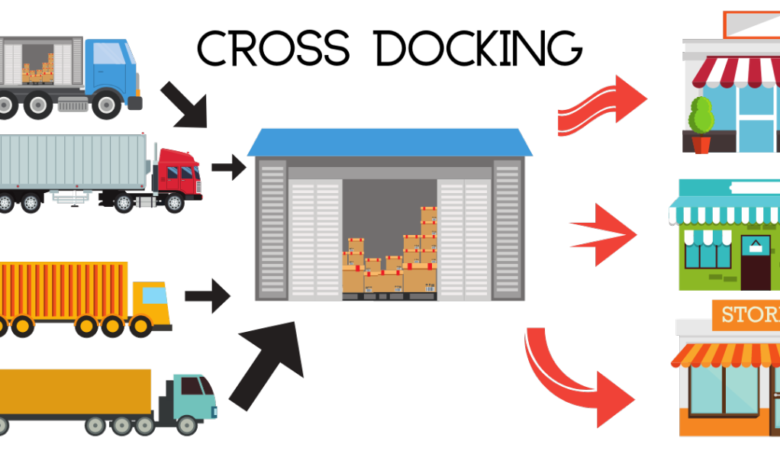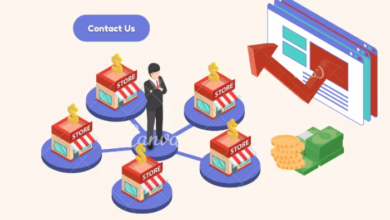Revolutionizing Business Logistics: Last-mile logistics and cross-docking technology

The integration of good logistics technology is important in this modern society where businesses are always in motion or dynamic. With electronic trade and the need for quick deliveries of goods, companies see the importance of last-mile logistics and cross-docking of supply chain procedures.
When we talk about crossdock meaning, it is a logistic system in which products are unloaded from incoming trucks or containers and immediately transferred to outgoing ones without storing them at all. The use of a mail order system considerably reduces handling and storage costs as well as speeds up the distribution process.
The Last-Mile Challenge
As one can see, the last mile is still problematic and expensive in terms of the supply chain. This refers to the last part of the trip in which the goods are moved from distribution points to the ultimate purchaser. This step is very important because it determines customer happiness as well as brand loyalty.
1. Meeting Evolving Customer Expectations
Businesses must respond to increasing consumer expectations that continue to change. Customers no longer only ask for quick shipments, but they insist on tracking and control of their orders. Modern last-mile logistics technology enables real-time tracking to keep customers updated about deliveries and improve overall satisfaction.
2. Sustainable Practices
Due to the increasing pressure on businesses to become more environmentally friendly, sustainability has emerged as an important issue. Last mile logistics technology helps in route optimization resulting in reduced fuel consumption and carbon emission. This approach will help businesses to adopt eco-friendly operations and conform to the demand for eco-friendliness.
The Use of Cross-Docking Technology for Unlocking Efficiency
One of the major functions that influence the efficient performance of supply chains include, cross-docking. Reducing storage time and handling will accelerate the flow of products to businesses.
1. Just-in-Time Inventory
With cross-docking, one of the main advantages is the promotion of the just in time inventory management. Quick inbound-outbound products flow avoids long term storage. This saves on holding costs and helps in maintaining low inventories leading to increase in efficiency.
2. Seasonal and Promotional Demands
During the peak seasons or during the time businesses offer promotions, businesses encounter varying demands. Cross-docking helps in responding to these needs by ensuring timely delivery of products to the market. This flexibility is priceless to the businesses seeking to take advantage of changes in market conditions and consumer buying habits.
Enhancing Collaboration through Technology Integration
Seamless technology integration can further boost synergy between last-mile logistics and cross-docking.
1. Collaborative Data Analytics
The integration of information from last-mile and cross-docking offers a great opportunity for businesses to make evidence-based decisions. Collaborating data analytics give firms to spot trends and route optimizations leading to greater supply chain effectiveness.
2. Predictive Maintenance
Technology integration is about more than merely tracking shipments. It encompasses the overall management of the entire logistics infrastructure. Predictive maintenance algorithms can forecast potential issues associated with delivery vehicles thereby, reducing chances of breakdowns and establishing an efficient supply chain.
Future Trends and Innovations
With advancing technology, the future of last-mile logistics and cross-docking seems interesting.
1. Autonomous Vehicles
autonomous vehicles represent a disruptive opportunity for last mile logistics. These can include businesses integrating autonomous delivery vehicles and lowering labor while increasing efficiency.
2. Drone Deliveries
The use of drone technology is increasingly common today because it provides fast and economic deliveries, especially in areas with the complicated terrain or insufficient accessibility.
Frequently Asked Questions (FAQs)
1. Why did we develop last-mile logistics technology?
Ans: Last-mile logistics is about making sure that goods are delivered timely and successfully to the end consumer.
2. How does cross-docking contribute to cost savings in logistics?
Ans: This ensures that products move fast from inbound to outbound with a minimal need for storage, handling and storage costs.
3. Is last-mile logistics technology a solution to sustainable business operations?
Ans: Indeed, it is possible through last-mile logistics technology, which optimizes routes and minimizes fuel usage thereby reducing carbon emissions as sustainability becomes a mainstream business practice.
4. How significant is collaborative data analytics as an integrator of last-mile logistics and cross-docking?
Ans: Collaborative data analytics involves combining information from last mile as well as cross docking operations for the purposes of finding trends, route optimization and ultimately, better logistics.
5. Why does cross-docking support JIT inventory management?
Ans: Moreover, cross-docking minimizes storage period thereby taking products from inbound to outbound very fast thus enacting just-in-time inventory management and cutting down storage expenses.
6. What are some rising technologies in this field that may affect the future of last-mile logistics?
Ans: Yes, among these developing trends are self-driving vehicles in last-mile logistics, which bring the prospect of fast and cheap deliveries.
7. What should businesses do to enable automated vehicles to be integrated in the last mile logistics?
Ans: For example, businesses should keep updated with technological developments and assess their infrastructure adaptability among other things and eventually conduct pilot programs that will help to improve the autonomous delivery system.
Conclusion
Lastly, embracing the changing logistics technology by focusing on last-mile logistics and cross-docking makes businesses competitive in a dynamic and rigorous economy. These technologies are integrated together to not only meet but rather exceed customer expectations, enhance efficiency, reduce costs and ensure competitiveness. The businesses that adapt the technologies will certainly dictate the future of logistics.




